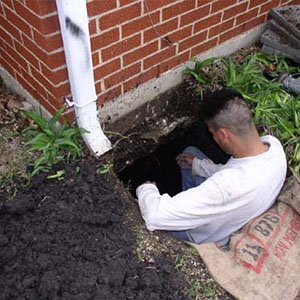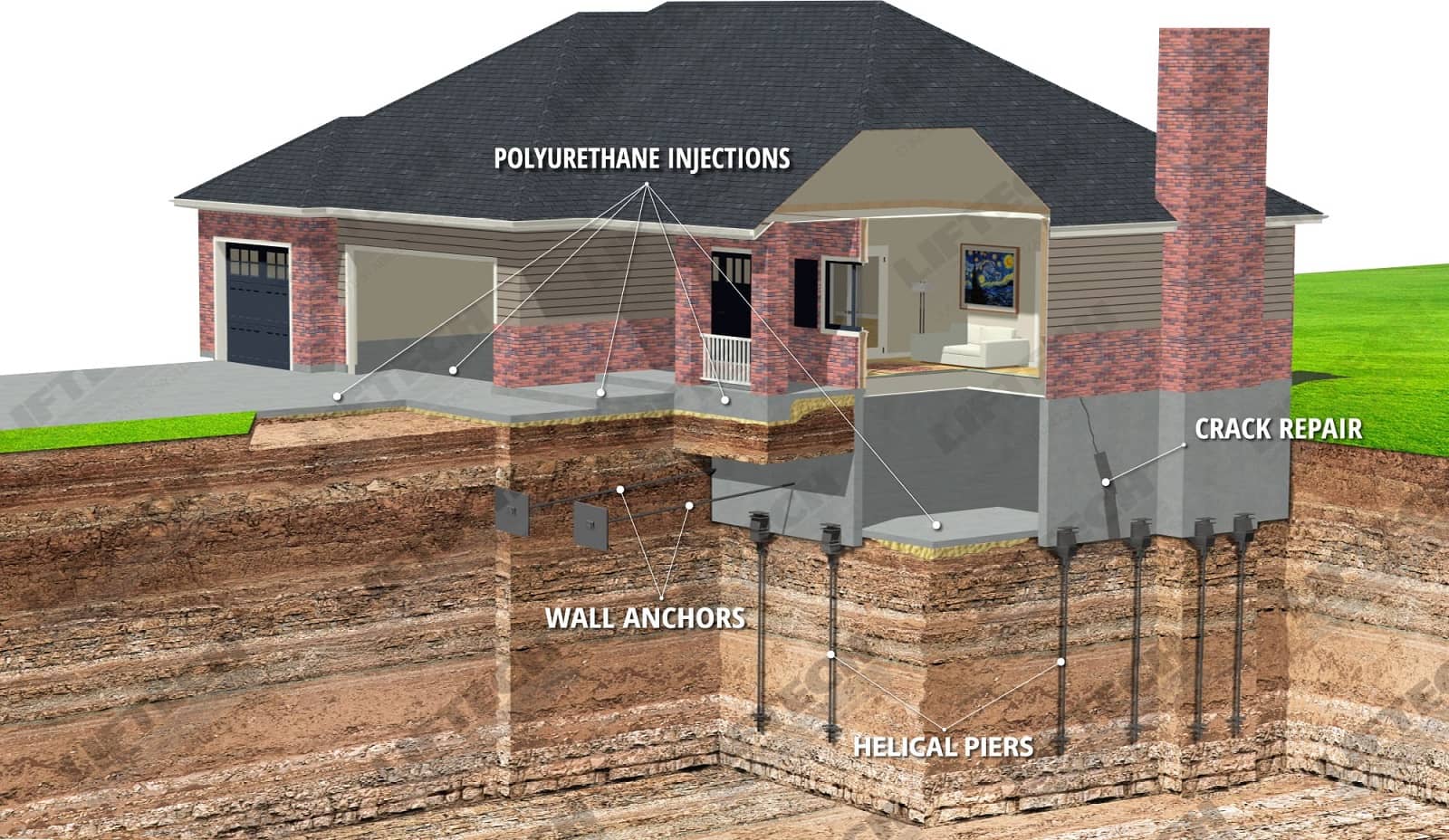Navigating Your Alternatives for Foundation Repair Oklahoma City: A Homeowner's Handbook
Navigating Your Alternatives for Foundation Repair Oklahoma City: A Homeowner's Handbook
Blog Article
Exploring Various Methods of Foundation Repair for Numerous Soil Kinds
Foundation repair is an essential aspect of keeping structural honesty, especially when thinking about the diverse challenges presented by different dirt types. The intricacy of soil behavior under differing conditions demands a tailored strategy to repair, ensuring ideal services such as helical piers for unsteady soils or chemical cements for cohesive layers. The inquiry continues to be: how do we determine the most effective technique for each unique circumstance? Comprehending the interplay between dirt characteristics and repair strategies is essential, yet there is even more to reveal in the mission for sustainable options. What variables truly dictate the option of approach?
Comprehending Soil Kinds
Dirt types play a crucial role in the security and long life of building structures, making it necessary for home owners and building professionals to understand their qualities and behavior. The interaction between soil and structure can figure out the structural integrity of a building. There are several soil types, each with unique physical residential properties that impact exactly how structures are made and preserved.
Granular dirts, such as sand and crushed rock, give great drain and are often thought about steady. They have high load-bearing abilities, which can support heavier structures. Nonetheless, these dirts can move otherwise compacted properly, leading to potential negotiation concerns. In contrast, natural dirts like silts and clays display various actions. These soils tend to keep dampness, and their load-bearing capability can vary significantly with adjustments in moisture content.
Rocky soils, recognized for their toughness and security, deal outstanding assistance for structures however might need specific devices for excavation. Alternatively, loamy soils, which are a balanced combination of silt, sand, and clay, commonly provide positive problems for foundation support due to their moderate drainage homes.

Recognizing these soil types is important for selecting proper structure fixing methods, making certain the sturdiness and safety and security of frameworks over time.
Difficulties With Extensive Clay
Amongst the numerous soil types, expansive clay offers distinct challenges for foundation stability as a result of its propensity to go through considerable quantity modifications with moisture variant. This type of dirt swells when wet and contracts when completely dry, which can apply considerable pressure on structures. These variations can lead to structure cracking, heaving, and settlement concerns, positioning considerable risks to the structural honesty of structures.
The challenges with large clay are worsened by its plasticity index, which determines the soil's capacity to transform shape and volume. A high plasticity index shows greater potential for motion, increasing the chance of damages to structures. This is especially problematic in areas experiencing extreme or regular weather modifications, where cycles of damp and dry problems are common.
Furthermore, the depth of expansive clay layers can vary, making complex the evaluation and preparation of appropriate foundation repair approaches. These complexities need a complete geotechnical assessment to guarantee reliable foundation fixing methods are executed, emphasizing the importance of resolving extensive clay obstacles with proficiency and care.
Solutions for Sandy Soils
Sandy soils, over here defined by their large bit size and reduced communication, present distinct challenges for structure stability due to their propensity for shifting and disintegration. By anchoring the structure to much deeper, much more secure dirt layers, these systems can give the necessary support to combat the shifting look here nature of sandy soils.
One more recommended method is the application of dirt stabilization techniques. Chemical grouting, for example, entails injecting a supporting representative right into the soil, which improves cohesion and decreases leaks in the structure. This procedure helps to strengthen the sandy substratum, consequently decreasing the threat of erosion and movement.
In addition, mounting correct drain systems is vital in sandy soil problems. Guaranteeing appropriate water drainage can prevent water buildup around the structure, which usually aggravates erosion and soil variation. Strategies such as French drains or surface area grading can be employed to direct water far from the building boundary.
Attending To Resolving in Loamy Soils
Fertile dirts, understood for their balanced mix of clay, silt, and sand, offer a productive base for lots of structures but can in some cases lead to structure settling as a result of their unique structure. This well balanced structure gives exceptional water drainage and nutrient retention, making it excellent for agriculture and landscape design. This same quality can become troublesome for structures, as shifts in moisture content can trigger the dirt to increase or contract, leading to working out.
Precise soil testing is essential to establish the details composition and dampness web content of the loam. As soon as data is collected, carrying out appropriate drainage solutions is important to preserve constant dampness degrees, therefore reducing helpful site the threat of soil tightening or development.

Ingenious Fixing Strategies
In the world of structure repair, cutting-edge techniques are consistently being developed to address the complex tests positioned by numerous dirt problems. As dirt kinds differ considerably in their structural residential or commercial properties, conventional techniques may not always are enough. The introduction of brand-new technologies in structure repair service gives much more customized remedies, making certain stability and long life.
One significant advancement is using helical piers, which are specifically reliable in unsteady or large dirts (foundation repair okc). These piers are screwed into the ground up until they reach a secure layer of soil, providing solid assistance for the foundation above. This approach lessens disturbance and is adaptable to various soil types, making it a versatile remedy
One more cutting-edge method is the application of polyurethane foam shot. This method involves infusing high-density polyurethane foam below the foundation to load voids and maintain the structure. It is a much less invasive choice to standard base, using fast installation with very little disruption to the surrounding location.
Furthermore, soil stablizing approaches, such as using chemical grouts, have actually gotten grip. These substances boost dirt stamina and minimize leaks in the structure, stopping future changing. Jointly, these innovative repair service techniques provide reliable remedies for the varied obstacles presented by differing soil conditions.
Final Thought

Foundation repair is an essential aspect of preserving architectural stability, specifically when thinking about the diverse challenges posed by various soil types (foundation repair okc ok). The intricacy of soil behavior under differing conditions necessitates a customized technique to repair, ensuring optimal solutions such as helical piers for unpredictable soils or chemical cements for cohesive layers. By anchoring the structure to deeper, more stable dirt layers, these systems can supply the essential support to counteract the changing nature of sandy dirts
Foundation repair work calls for mindful consideration of dirt types to make certain stability and longevity. Chemical grouts improve soil strength and lower permeability in natural soils.
Report this page